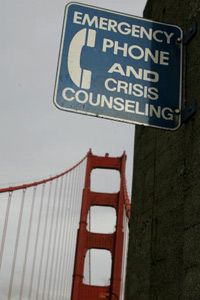The added layer of anonymity in texting, coupled with the convenience factor, are big deals for people in crisis as they need to be able to take action quickly, easily and confidentially. "Texting is private, comfortable and accessible. People can send a text from anywhere, without making a sound," Womble adds.
Although the voiceless option seems impersonal to some, the shift in format makes sense because a lot of users have never known life without texting, and are much more comfortable communicating that way. The use of text (also known as SMS messaging) as a general communication method experienced a tremendous increase in the early 2000s. June 2001 saw 30 million messages exchanged in the United States alone, with that number peaking in 2011 at 2.3 trillion (use of other apps for a similar purpose, like Facebook Messenger and WhatsApp, have kept the number from climbing).
This explosion in texting inspired the social change group Dosomething.org to spin off Crisis Text Line, as members started texting to ask for help with personal issues.
"In the five years since our launch in 2013, our text volume has increased each year," Womble says. "Between 6,000 and 10,000 texters contact Crisis Text Line each day." In fact, the org reports that more than 91 million text messages have been exchanged since they opened in 2013.
As the means of contacting a crisis line has expanded over time, so have the reasons for using one. When the first suicide prevention center in the U.S. opened in 1958 it was focused on just that aspect of mental health. Now, Crisis Text Line and many other services advertise that counselors are available for any "painful emotion for which you need support."
"Crisis Text Line is here for people of all ages who are in a mental or emotional state that has left them in a dangerous condition or unable to cope in a functional or productive way," Womble says. "We believe everyone has the right to feel supported and this is a no judgement zone. We cover a whole range of crises, from anxiety and depression, to eating disorders and bullying to suicide and self-harm."



